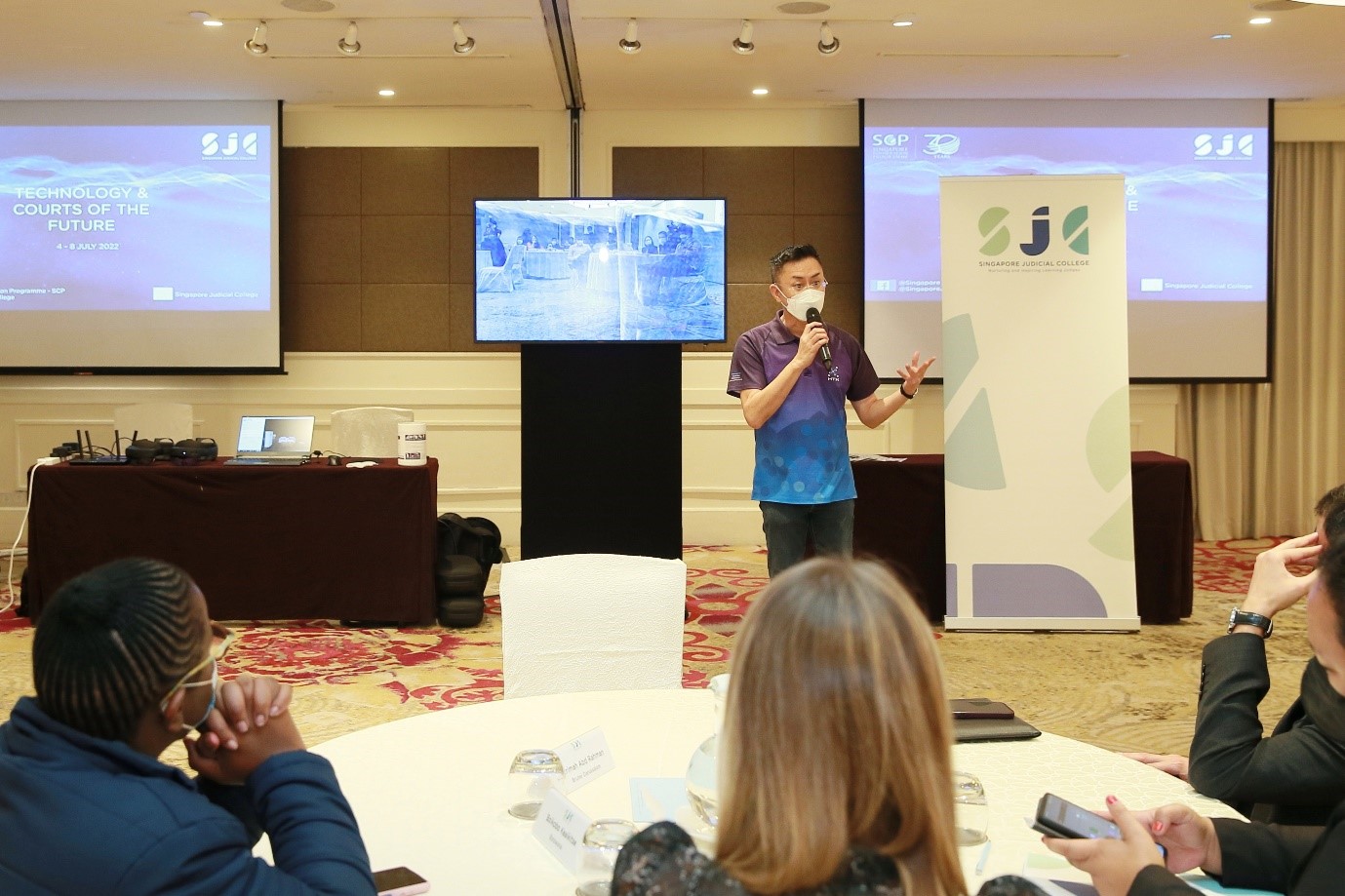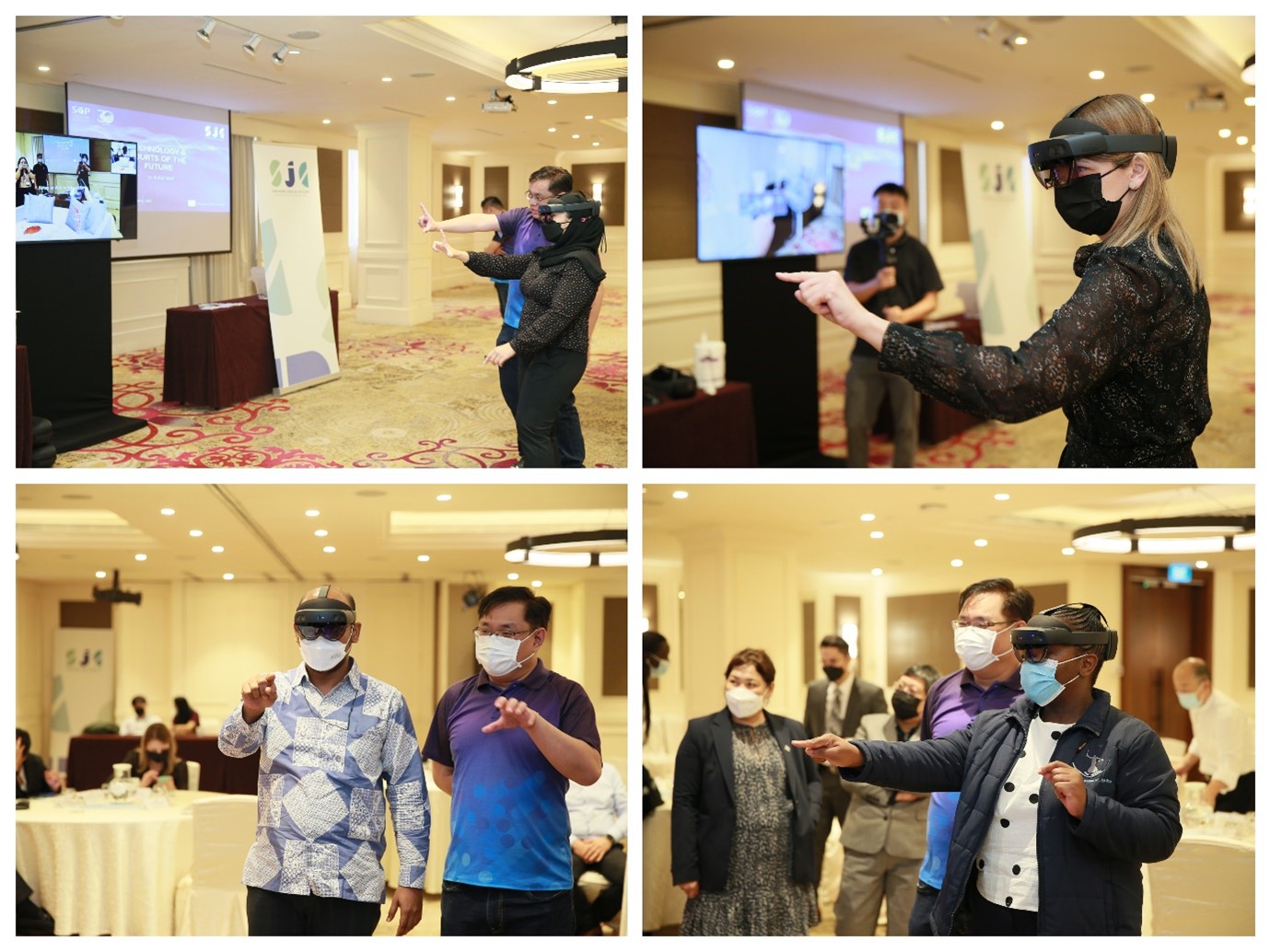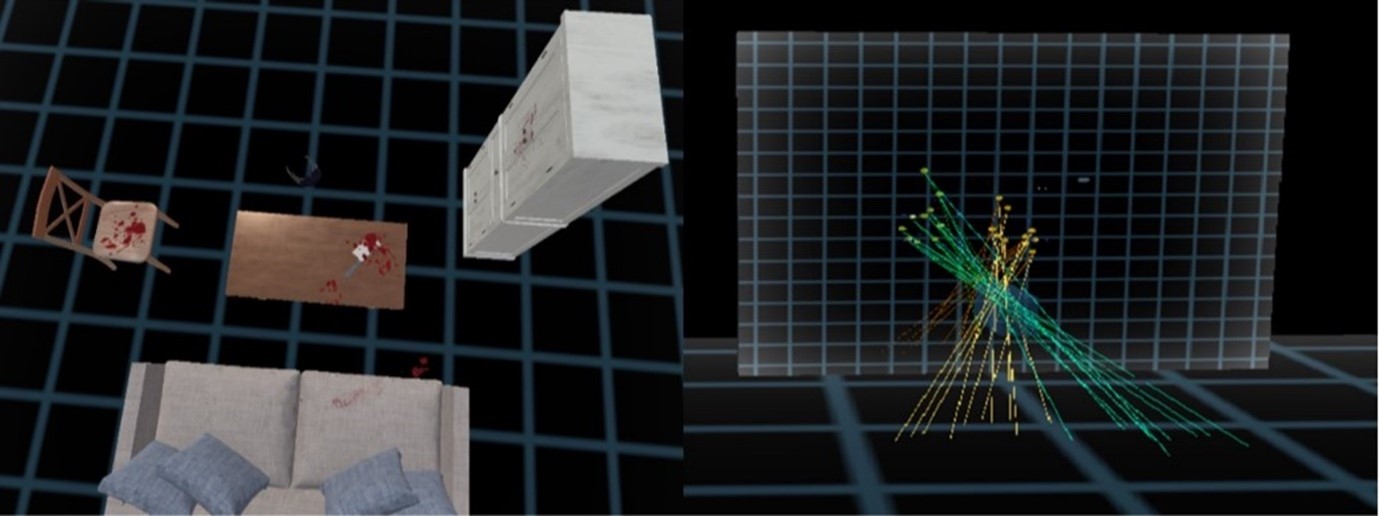
HTX showcased its mixed reality training system for bloodstain pattern analysis as part of the Technology & Courts of the Future (COTF) 2022 programme that took place in Singapore from July 4 to 8.
Conducted by the Singapore Judicial College under the auspices of the Singapore Cooperation Programme, this year’s edition of the programme brought together 25 international participants from the judicial, legal, government, and tech fields to discuss the challenges and strategies for implementing technology solutions for courts of the future.
Experiential Learning: Future Technology Showcase

COTF 2022 participants had a first-hand experience on using the mixed reality training system for blood pattern analysis. They were guided by Terence Teng, Lead Engineer, Human Factors & Simulation Centre of Expertise, HTX. (Photo: Singapore Cooperation Programme)
In an emerging technology showcase on July 7, Ying Meng Fai, Director at HTX’s Human Factors & Simulation (HF&S) Centre of Expertise (CoE), demonstrated how mixed reality (MR) – the merging of real and virtual worlds where physical and digital objects co-exist and interact – can be a game-changer for bloodstain pattern analysis (BPA) training.
BPA is the study of the size, shape, and distribution of bloodstains found at a crime scene. It is a crucial method that can serve to guide the direction of investigation, or validate statement of accounts gathered in the course of investigation.
Conventional BPA training requires the creation of mock crime scenes using synthetic blood and flipchart papers mounted onto walls. This method is not only time-consuming and labour intensive, but also lacks repeatability and consistency.
In order to address these limitations, the HF&S team leveraged on cutting-edge MR technology to develop an innovative system that augments and improves training for Crime Scene Specialists (CSS) while providing significant savings in time, cost, and manpower compared to conventional BPA training methods.
The system also provides a versatile platform for forensic specialists to experience various virtual BPA scenarios in a physical setting. The system significantly reduces time, cost, and manpower for basic BPA training and creates a seamless and immersive training experience.
Challenges in BPA training
“A challenge in effective BPA training is teaching officers ‘stringing’, a method used to identify the source area of an impact pattern,” Meng Fai said.
Trainees must first identify suitable bloodstains in the impact pattern. They will then have to make manual measurements by hand to derive the angle of impact, followed by taping a physical string from the bloodstain to the ground based on its calculated impact angle. The process is time-intensive and laborious, and trainees who are new to BPA often find it challenging to select suitable bloodstains without guidance.
Using mixed reality for effective BPA training
An emergent technology, MR enables users to interact with the physical world and digital objects, an experience that is not possible with older technologies such as virtual reality (VR) and augmented reality (AR). For VR, users are fully immersed in a virtual world cut off from the physical world. AR, on the other hand, enhances the real world with an overlay of digital elements, such as in the popular Pokémon Go mobile game.
The BPA system makes use of a MR headset to project holographic images onto the user’s field-of-view to create a realistic virtual crime scene with different bloodstains that trainees could interact with and analyse.
The need for physical props or mock-ups is reduced and more scenarios can be created as the system is able to project holographic furniture to simulate different room layouts. This allows trainees to build their confidence and familiarise themselves with the use of investigative tools while enabling instructors the versatility to easily create different crime scenes for different training topics.
The BPA system using MR can significantly boost training in the stringing method. It actively guides the trainee in selecting suitable bloodstains and provides instantaneous feedback without the need for one-to-one instructor supervision. It also replaces
physical strings with holographic lines that can be viewed by the trainee in real-time.
 In mixed reality, holographic bloodstains can be projected onto various surfaces without the need for them to be recreated manually for training in bloodstain pattern analysis (Photo: HTX Human Factors and Simulation Centre of Expertise)
In mixed reality, holographic bloodstains can be projected onto various surfaces without the need for them to be recreated manually for training in bloodstain pattern analysis (Photo: HTX Human Factors and Simulation Centre of Expertise)
“In-depth trials and evaluations were conducted with Crime Scene Specialists from SPF and very positive feedback were received from users who found the system to be useful, innovative and most importantly, effective in meeting the training objective,” Meng Fai said. “We are happy to be given the opportunity to showcase this system to the participants of COTF 2022 who were amazed and appreciative of the innovative approach taken by HTX in augmenting training for our Home Team officers.”
Read related article: Honing skills in Bloodstain Pattern Analysis with Mixed Reality

